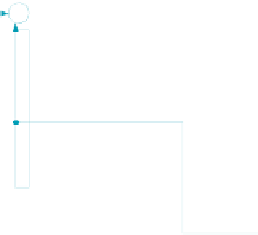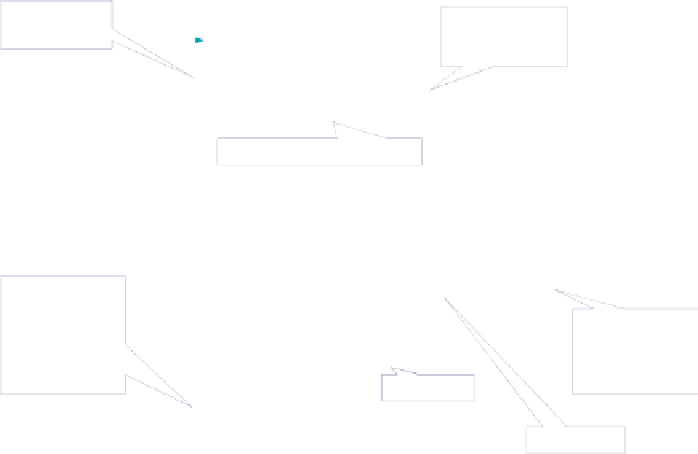Cryptography Reference
In-Depth Information
• multiple reference pictures (up to seven)
• content adaptive binary arithmetic coding (CABAC)
Fig. 2.21 shows the block diagram of the H.264/AVC encoder. In the dia-
gram we have specified the new features related to various function blocks.
Intra prediction
4 4 & 16 16
Intra prediction
4 4 & 16 16
Quantization step
sizes increased at a
compounding rate
Quantization step
sizes increased at a
compounding rate
Coding control
Coding control
Video
source
Video
source
Intra
Intra
Transform
Transform
Quantization
Quantization
Quantized
transform
coefficients
Quantized
transform
coefficients
+
+
Inter
Inter
4 4 Integer Transform (fixed)
4 4 Integer Transform (fixed)
Inverse
quantization
Inverse
quantization
Bit stream out
Bit stream out
Entropy
coding
Entropy
coding
Inverse
transform
Inverse
transform
Motion
compensation
Motion
compensation
Seven block sizes
and shapes, five
prediction modes
with B -picture and
multiple reference
picture selection
Seven block sizes
and shapes, five
prediction modes
with B -picture and
multiple reference
picture selection
Universal VLC or
context -based
adaptive binary
arithmetic coding
Universal VLC or
context -based
adaptive binary
arithmetic coding
+
+
Frame store
Frame store
Loop filter
Loop filter
Motion
estimation
Motion
estimation
M
otion
vecto
r
Motion vector
No mismatch
No mismatch
Fig. 2.21.
H.264/AVC encoder block diagram.
The increased coding e
ciency of the H.264/AVC has led to new applica-
tion areas and business opportunities. There are strong interests of adopting
it in various industries such as digital television broadcasting over cable, satel-
lite, terrestrial, etc., as well as the high definition DVD. Another interesting
business area is streaming TV signal over ADSL networks, as it is now pos-
sible to transmit video signals at about 1 Mbit/s with SDTV quality. In the
field of mobile communication, H.264 will play an important role because the
bandwidth will remain to be the bottleneck of multimedia services, even under
the third-generation mobile (3GPP and 3GPP2) networks.
2.6 Summary
Video has always been the backbone of multimedia technology. In the last two
decades, the field of digital video coding has been revolutionized by the advent
of various standards like MPEG-1 to MPEG-4 and H.261 to H.263++, and





































































